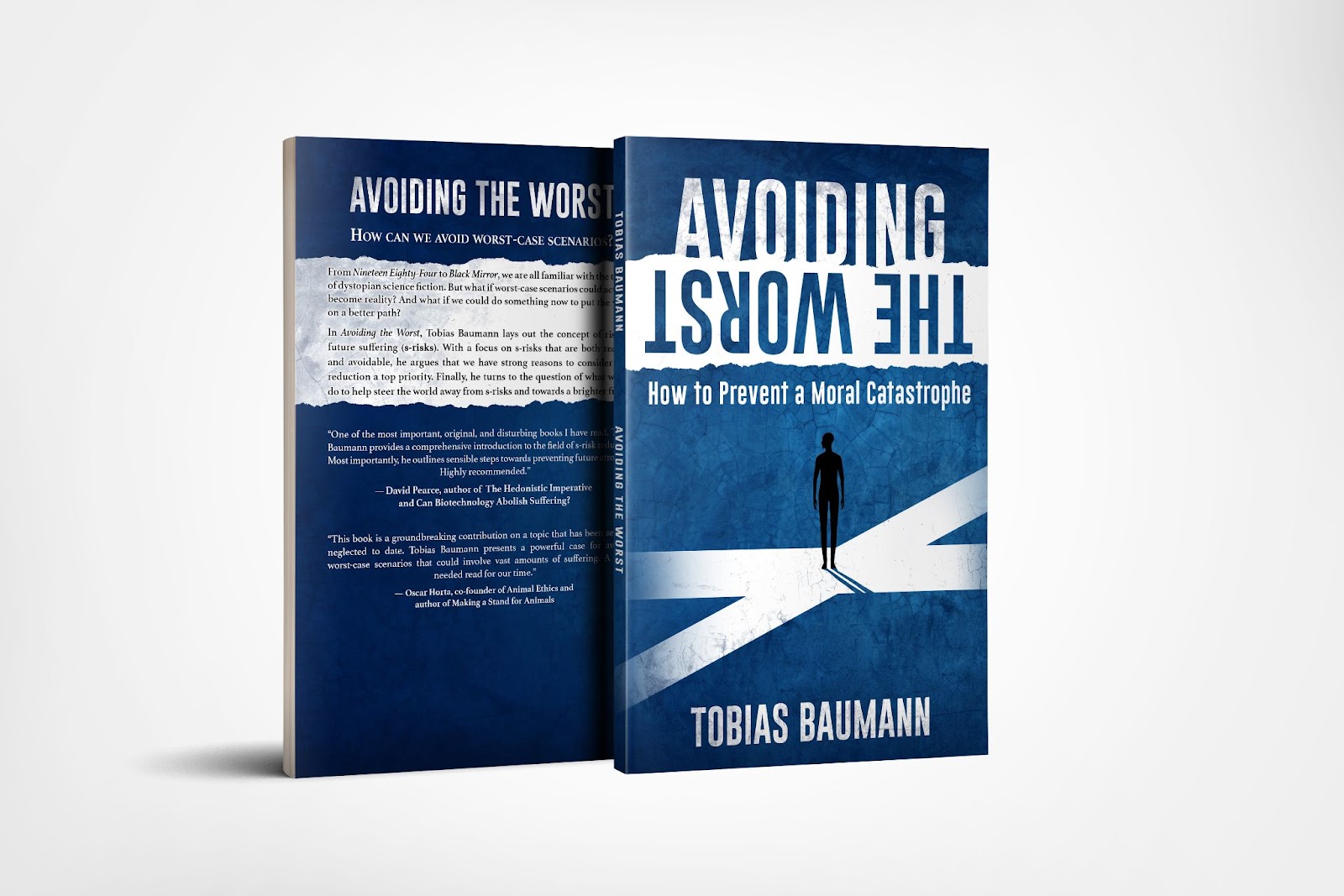Tobias Baumann
From Nineteen Eighty-Four to Black Mirror, we are all familiar with the tropes of dystopian science fiction. But what if worst-case scenarios could actually become reality? And what if we could do something now to put the world on a better path?
In Avoiding the Worst, Tobias Baumann lays out the concept of risks of future suffering (s-risks). With a focus on s-risks that are both realistic and avoidable, he argues that we have strong reasons to consider their reduction a top priority. Finally, he turns to the question of what we can do to help steer the world away from s-risks and towards a brighter future.
The book—a first-of-its-kind comprehensive introduction to s-risks—is recommended reading for anyone interested in effective altruism, longtermism, artificial intelligence, or suffering-focused ethics.
Read the Book
- Find it on Amazon for Kindle and in paperback.
- Read the PDF edition.
- Listen to a provisional audio version.
Praise for the Book
“One of the most important, original, and disturbing books I have read. Tobias Baumann provides a comprehensive introduction to the field of s-risk reduction. Most importantly, he outlines sensible steps towards preventing future atrocities. Highly recommended.”
— David Pearce, author of The Hedonistic Imperative and Can Biotechnology Abolish Suffering?
“This book is a groundbreaking contribution on a topic that has been severely neglected to date. Tobias Baumann presents a powerful case for averting worst-case scenarios that could involve vast amounts of suffering. A much needed read for our time.”
— Oscar Horta, co-founder of Animal Ethics and author of Making a Stand for Animals
Table of Contents
Part I: What are s-risks?
Chapter 1: Technology and astronomical stakes
Chapter 2: Types of s-risks
Part II: Should we focus on s-risks?
Chapter 3: Should we focus on the long-term future?
Chapter 4: Should we focus on reducing suffering?
Chapter 5: Should we focus on worst-case outcomes?
Chapter 6: Cognitive biases
Part III: How can we best reduce s-risks?
Chapter 7: Risk factors for s-risks
Chapter 8: Moral advocacy
Chapter 9: Better Politics
Chapter 10: Emerging technologies
Chapter 11: Long-term impact

